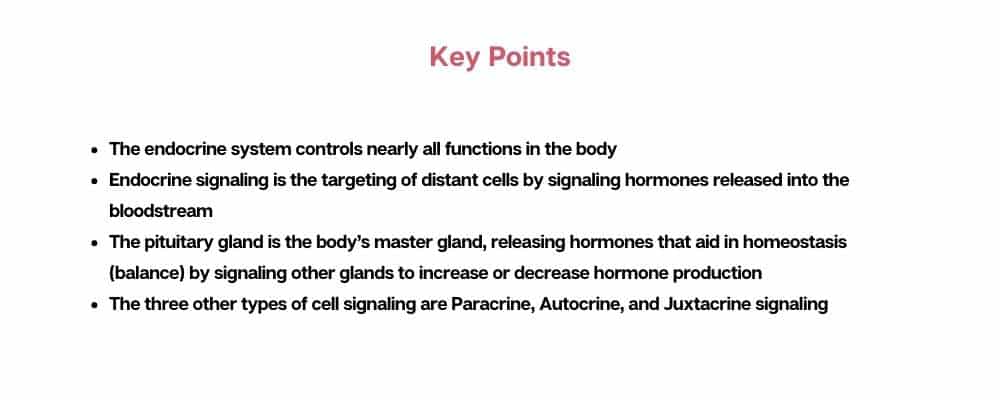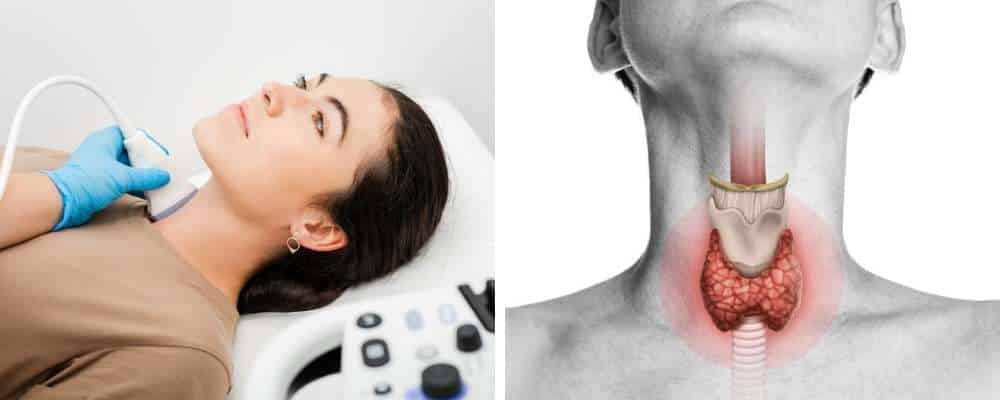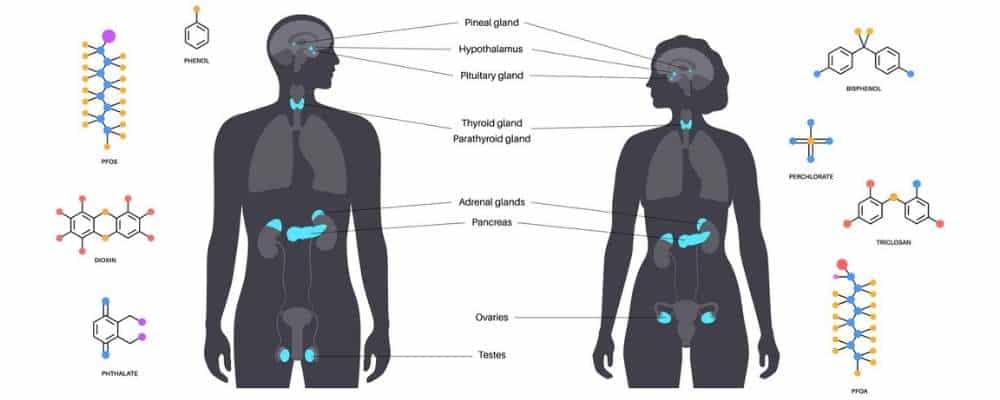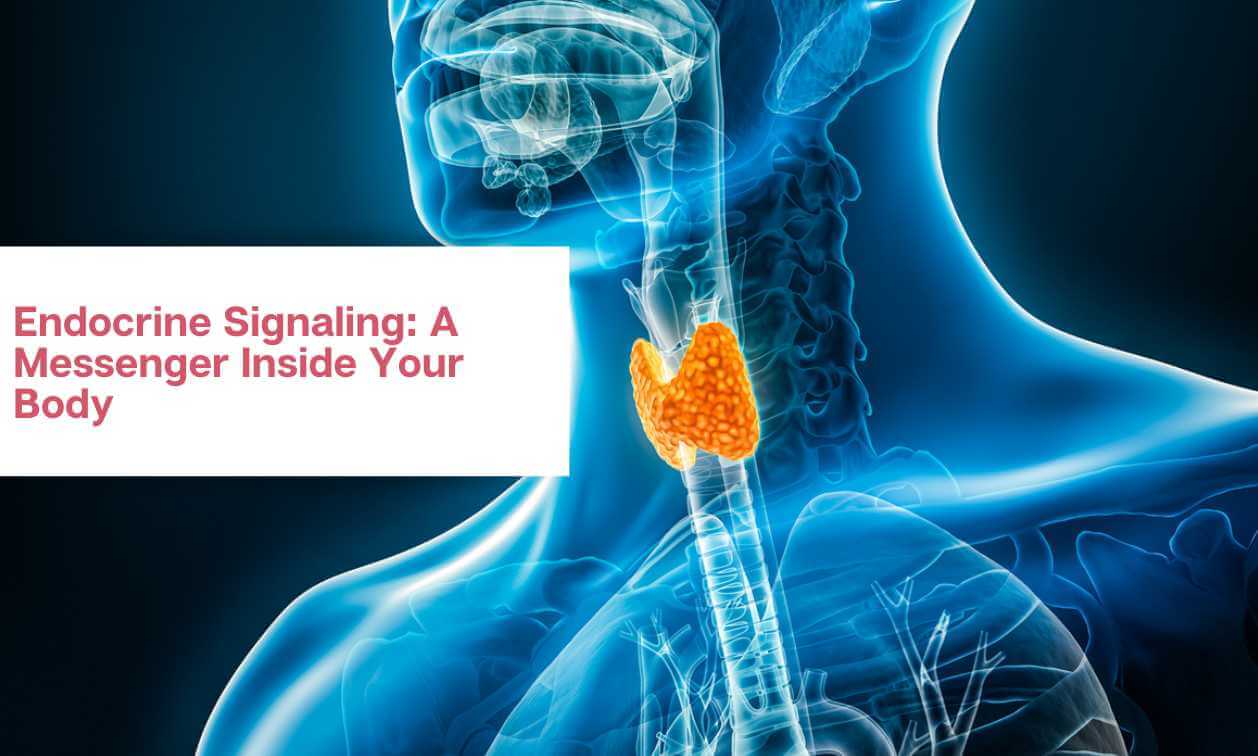
Endocrine Signaling: A Messenger Inside Your Body
Table of Contents
While the nervous system is considered the most important part of the human body, the endocrine system controls nearly all functions that keep us healthy and alive. It is easy to think about the heart beating, the muscles and bones moving us through our daily actions, and the digestive system helping to process the food we consume and turn it into usable energy.
What do all these have in common?
They rely on the hormones of the endocrine system to signal their functions.
Endocrine signaling keeps the body moving, healthy, productive, and performing in all the ways needed for life. The hormones the endocrine glands supply influence all 11 organ systems – including the endocrine system itself.
The 11 organ systems include:
- Cardiovascular (circulatory) system
- Digestive system
- Endocrine system
- Excretory system (including renal and urinary systems)
- Integumentary system
- Lymphatic system
- Muscular system
- Nervous system
- Reproductive system
- Respiratory system
- Skeletal system
We will look more closely at what endocrine signaling is, its importance to the body’s 11 systems, the hormones and glands that make up the endocrine system, and other forms of cell signaling crucial to the body.
What Is Endocrine Signaling?
One of the most complex processes in the body is cellular communication. It can occur in many ways between the various cells, organs, and glands in the body. Every cell in the body has a specialized function, requiring unique signaling mechanisms to stimulate its actions.
The endocrine system is the largest producer of chemical messengers in the human body. Its hormones enter the bloodstream for transport to their specific receptor cells. These cells can be directly next to the secreting gland or far from the location.
Endocrine signaling is the targeting of a distant cell by signaling hormones secreted into the bloodstream.
Cellular communication occurs in two ways:
- Intercellular signaling – communication between cells, with actions taking place in the extracellular matrix
- Intracellular signaling – communication within a cell, with actions occurring within the cell’s cytoplasm
The molecules that deliver these signals are called ligands, which bind to other molecules (receptors) to promote their functions. The ligands of the endocrine system are called hormones.
What is the importance of endocrine signaling?
The endocrine system monitors hormone levels throughout the body to maintain homeostasis (balance) in hormone levels. Any time a hormone is out of balance, proper physiological functions associated with that hormone cannot occur. The pituitary gland, in its role as the body’s master hormone, instructs other glands via hormone secretion to release more of their hormones into the bloodstream to restore homeostasis.
How quickly does endocrine signaling work?
With endocrine signaling, the hormones may move slowly or rapidly to their target receptors.
Fast-moving hormones include epinephrine and norepinephrine – the fight-or-flight hormones released during a highly stressful or dangerous situation. Peptide hormones, including human growth hormone (HGH), also race quickly to their receptor cells. Insulin is another example of a rapid signaling hormone as it instructs the muscle cells to take up glucose.
Some hormones may last longer in the bloodstream, providing influence that can last for days, including thyroid and steroid (reproductive) hormones. Glucocorticoids are an example of a delayed-affecting hormone as they bind to DNA elements within a cell to initiate the slow process of protein production.
Hormones and Glands of Endocrine Cell Signaling
The endocrine system features various glands and organs that manufacture and release hormones (chemical messengers) into the bloodstream. These hormones travel through the blood to their target receptor cells. Once there, they bind with receptors on the cells’ surface or enter the cell to stimulate their actions. Hormones can influence behavior, health, digestion, metabolism, cellular regeneration, sexual functions, cognitive performance, and many other vital activities in the body.
When hormone levels are out of balance, hormone replacement therapy (HRT) can help regulate homeostasis. An endocrinologist is a specialist to see for hormone issues.
Here are leading examples of endocrine glands, their most commonly known hormones, and their target glands or organs:
Pituitary Gland
- Human growth hormone: muscles, bones, organs, brain, liver, kidneys, adipose tissue, sexual organs, adrenal glands, cardiovascular system, metabolism
- Follicle-stimulating hormone (FSH): sexual organs (estrogen production in the ovaries and sperm production in the testes)
- Thyroid-stimulating hormone (TSH): thyroid gland for thyroid hormone production
- Luteinizing hormone (LH): stimulates ovulation and progesterone production in the ovaries and testosterone production in the testes
- Prolactin: breastmilk production following childbirth
- Adrenocorticotropic hormone (ACTH): adrenal gland for cortisol production, blood pressure maintenance
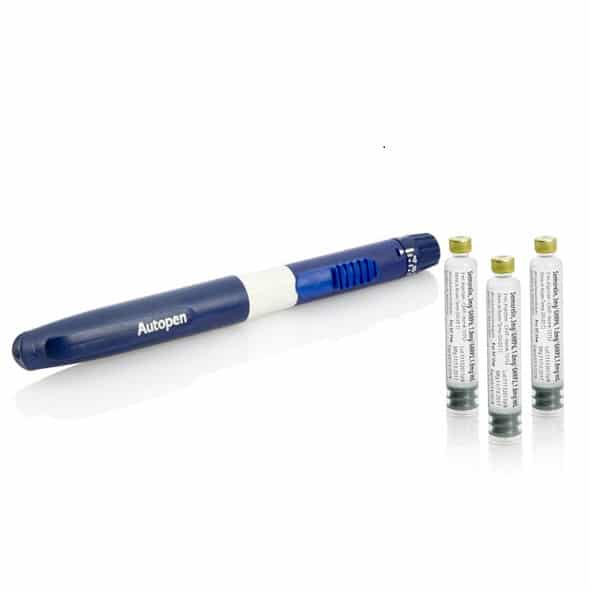
Adrenal Gland
- Cortisol: released during stress for an energy increase, regulates blood pressure, sleep-wake cycle, inflammation suppressor, metabolism of carbohydrates, fats, and proteins, and increases blood sugar
- Epinephrine (adrenaline) and Norepinephrine: fight-or-flight hormones that increase heart rate, blood flow to muscles and brain, and glucose metabolism during stressful situations
- Aldosterone: helps regulate blood sodium and potassium levels and blood pressure
- DHEA and Androgenic Steroids: precursor hormones converted into female hormones by the ovaries and male hormones in the testes
Thyroid Gland
- Triiodothyronine (T3) and thyroxine (T4): metabolism, digestion, heart rate, weight, mood, body temperature
Parathyroid Gland
- Parathyroid hormone (PTH): regulates blood calcium levels by telling the body to take calcium from the bones when levels are low
Hypothalamus
The hypothalamus produces the following two hormones that are then stored and released by the pituitary gland’s posterior lobe:
- Oxytocin: uterine contractions and breastmilk production
- Vasopressin (antidiuretic hormone ADH): regulates water and sodium balance in the body
Pineal Gland
- Melatonin: works on the brain, blood vessels, ovaries, and GI tract, regulates the sleep-wake cycle
Ovaries
- Estrogen: cholesterol levels, bone density, muscle mass, circulation, blood sugar, collagen production, cognitive performance, helps regulate the menstrual cycle, ovulation, thickening uterine lining to prepare for pregnancy, sex drive
- Progesterone: also produced by the placenta during pregnancy, prepares the endometrium for pregnancy, thickens uterine lining, encourages milk production
Testes
- Testosterone: sperm production, hair growth, red blood cell production, sex drive, bone mineral density, muscle mass, mood
- Estradiol (estrogen): sperm maturation, bone health
Pancreas
- Insulin: regulates glucose uptake in the muscles, liver, and fat, influences protein and fat breakdown
- Glucagon: works with other hormones to regulate blood glucose levels, tells the liver to convert stored glucose to a usable form for release into the bloodstream, inhibits liver uptake of glucose
Liver
- Insulin growth factor 1 (IGF-1): promotes cellular growth by mediating HGH effects throughout the body, regulates nutrient metabolism
- Hepcidin: blocks iron release into body fluids
- Thrombopoietin: increases platelets
- Angiotensinogen: increases blood pressure
The pancreas and the liver are both organs and glands. In their role as endocrine glands, they release crucial hormones into the body.
What Are Other Forms of Cell Signaling?
Endocrine signaling is one of four categories of the body’s chemical signaling. The other three are Paracrine, Autocrine, and Juxtacrine signaling.
- Paracrine signaling
In paracrine signaling, a molecule secreted from one cell acts on a nearby cell without the need to enter the bloodstream as they move through the extracellular matrix via diffusion. Paracrine signals occur quickly as they last a short time and are removed by neighboring cells or rapidly degraded by enzymatic actions. In some instances, paracrine molecules may enter the bloodstream but will not produce any response as their concentrations are too low. Nervous system neurotransmitters and histamine that narrows the airways are two examples of paracrine signaling.
- Autocrine signaling
In autocrine signaling, the cell targets itself or a similar cell and can bind to the released ligand. These cells can signal themselves to die (apoptosis) when infected with a virus to kill it. Inflammatory responses and pain regulation are other functions of autocrine signaling. Interleukin-1 is an example of an autocrine signaling molecule that influences inflammatory responses.
- Juxtacrine signaling (direct signaling across gap junctions)
Also referred to as contact-dependent signaling and direct cell signaling, cell communication occurs by direct contact in this form of signaling. Close contact allows cell-to-cell or cell-to-extracellular matrix signaling where a ligand on one surface can bind to the receptor on an adjacent surface. The signal transmits from the cytoplasm of one cell into the cytoplasm of the adjacent cell through small conduits. Gap junctions are water-filled communication channels between neighboring cells’ plasma membranes. Small signaling molecules (intracellular mediators) can diffuse between the two cells, whereas larger molecules like DNA and proteins do not fit through these channels. Calcium is an example that uses gap junctions.
Conclusion
Endocrine signaling is vital for a healthy, productive body and life. The endocrine hormones influence all 11 organ systems to ensure the body functions as designed. Hormone replacement therapy is beneficial when hormone levels become too low or high. HRT medications work as the body’s natural hormones by signaling the receptors to engage in their actions.
